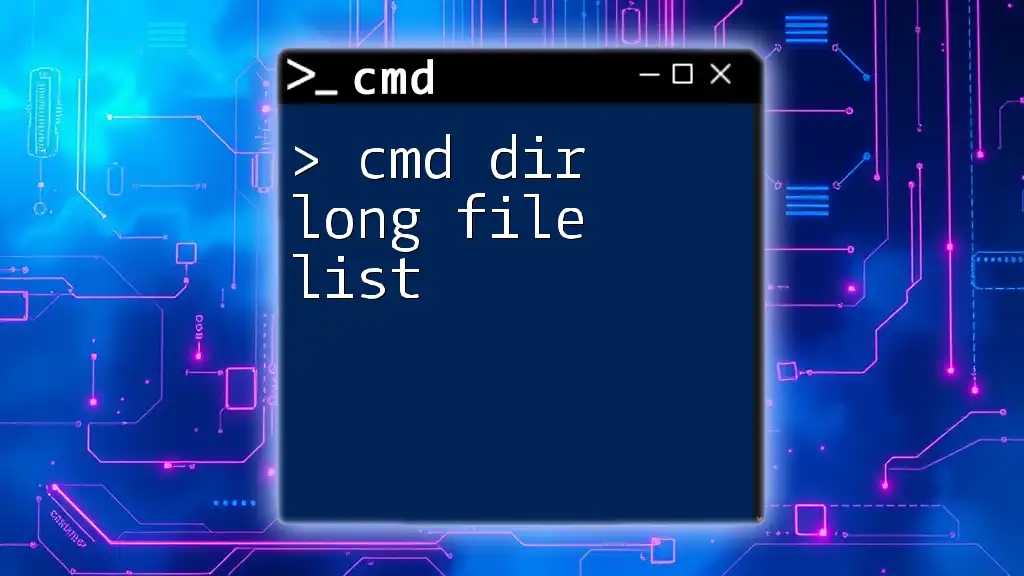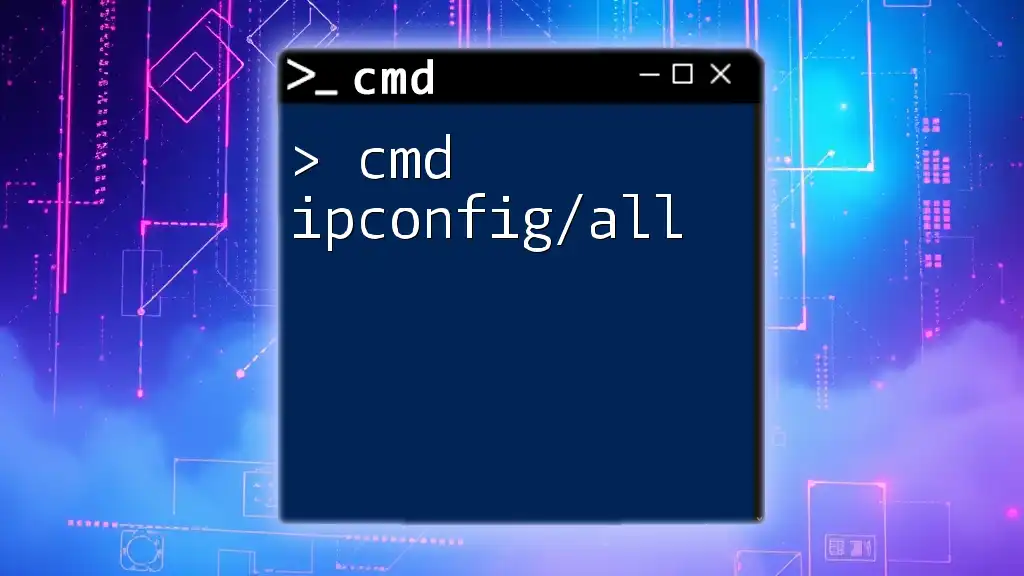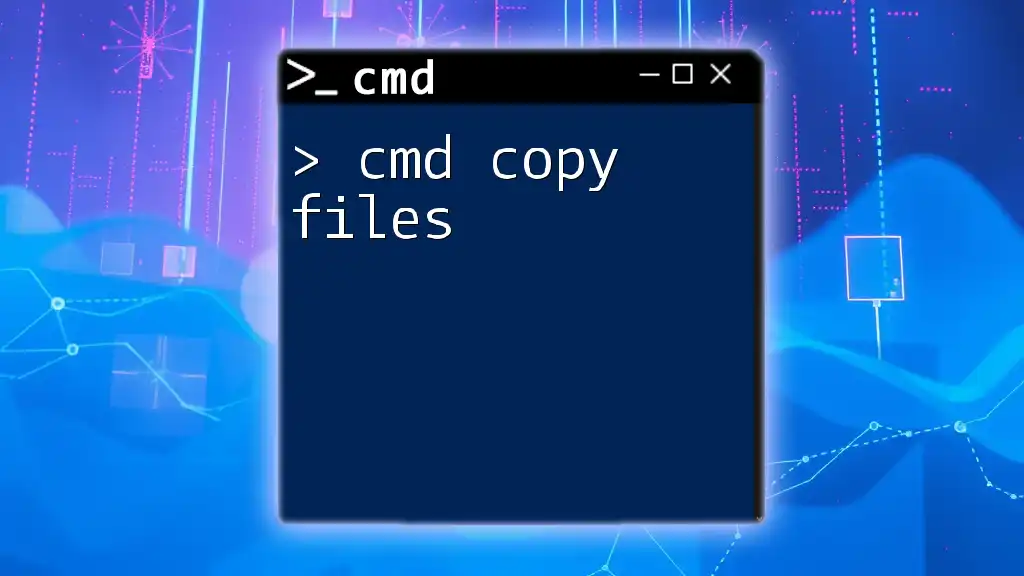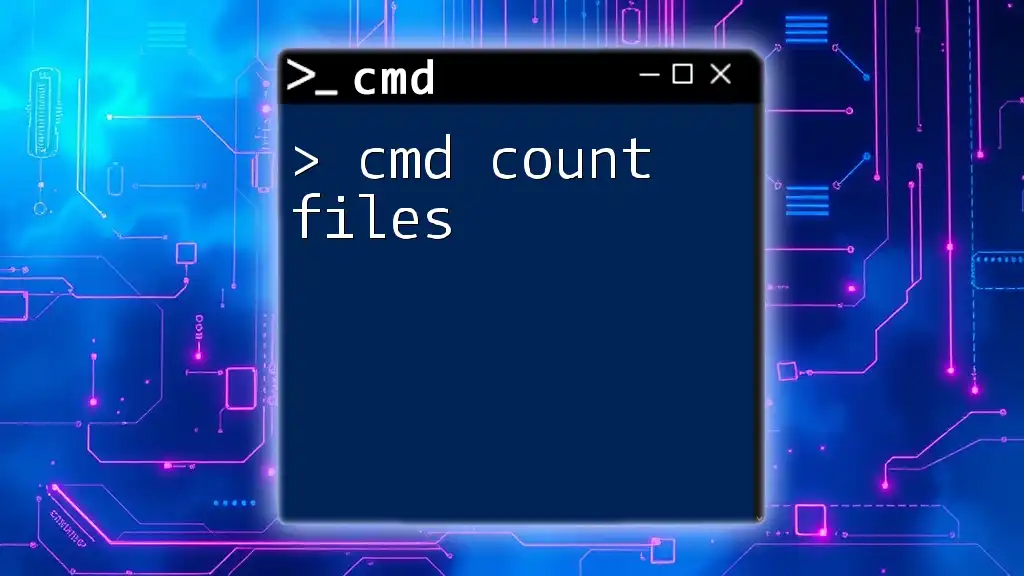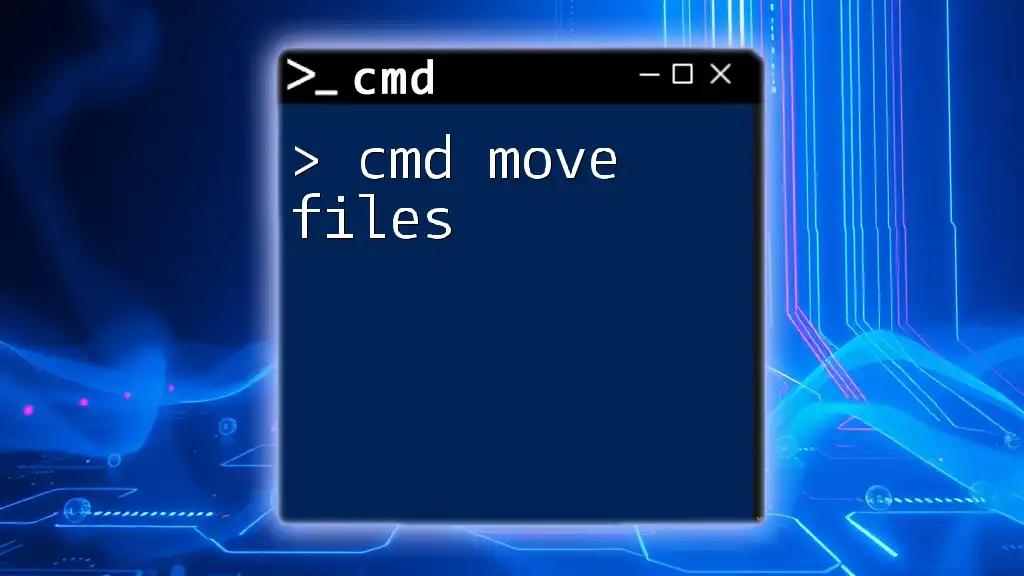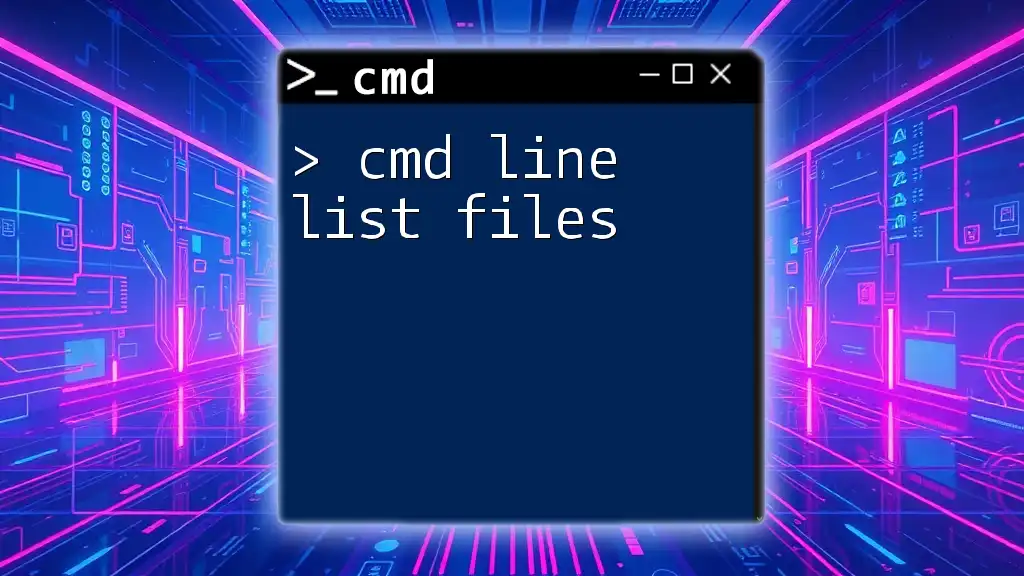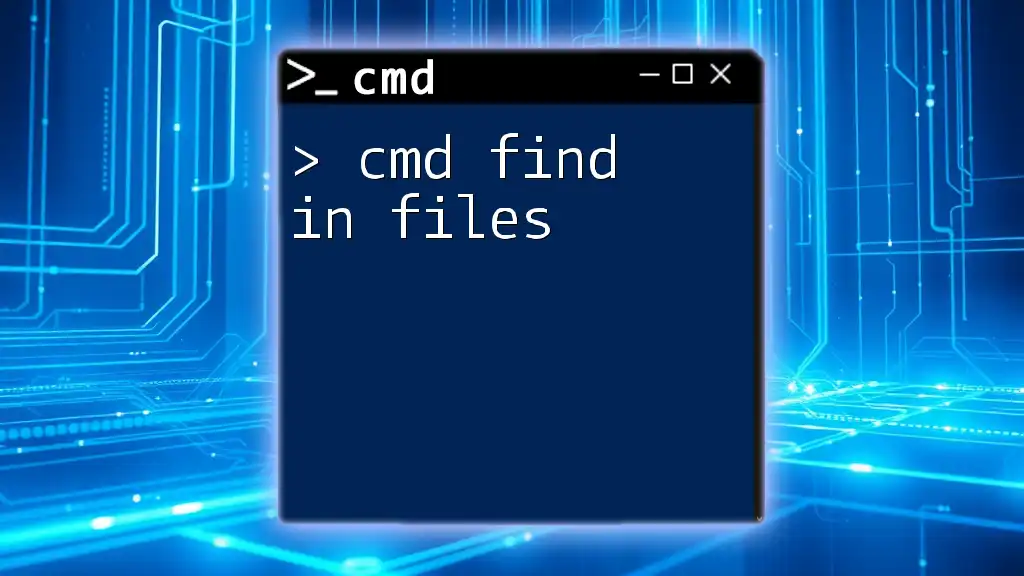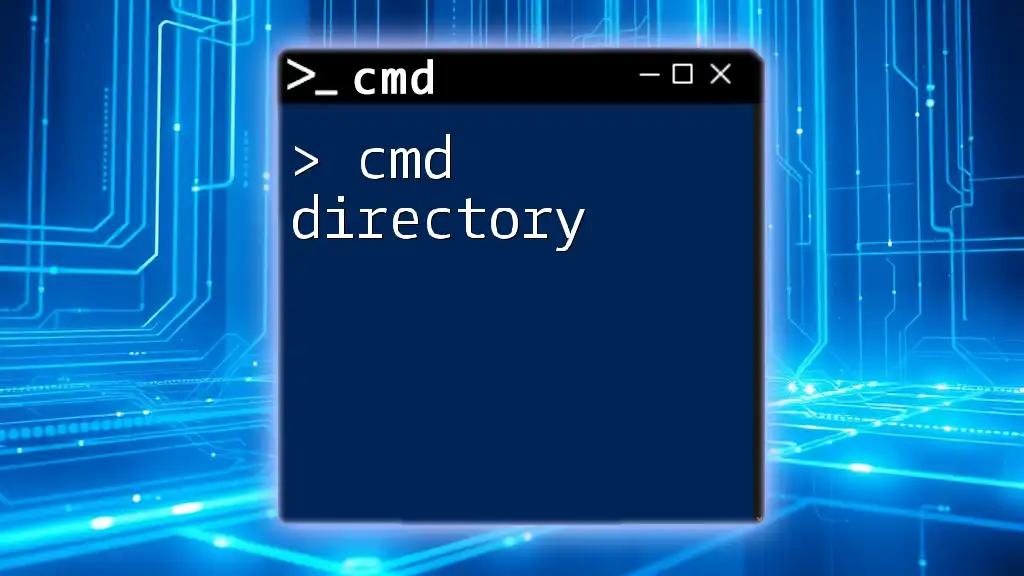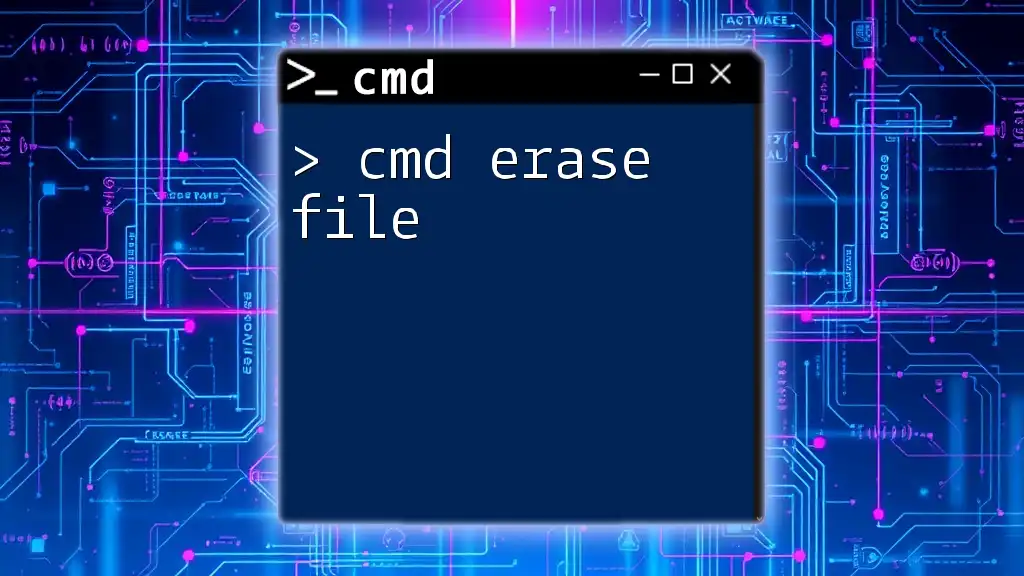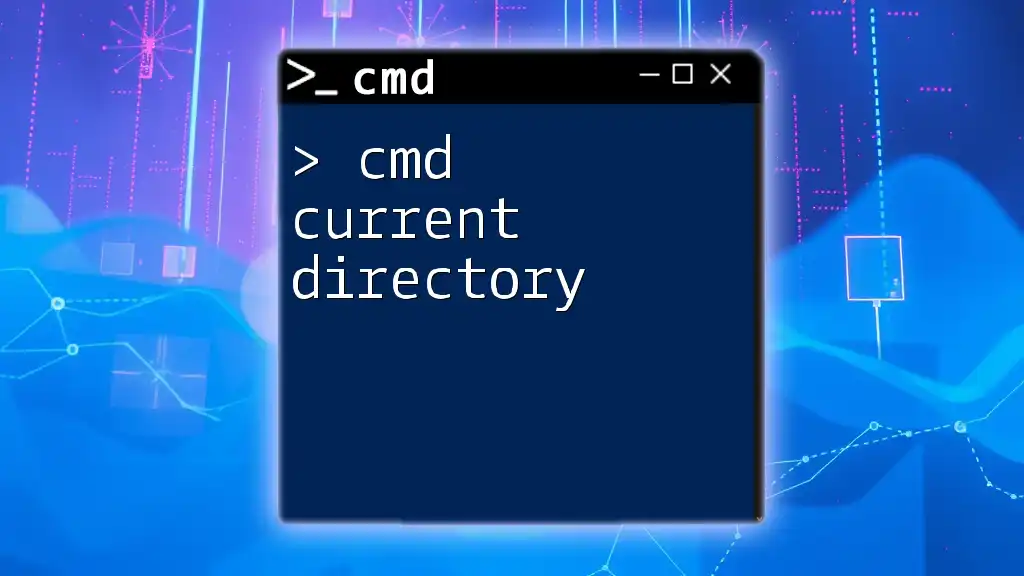The `dir` command in CMD is used to display a detailed list of files and directories within the specified directory, and it can be modified to show a long format with additional information about each file. Here's how to use it:
dir /long
Understanding the `dir` Command
What is the `dir` Command?
The `dir` command is a fundamental element of the Windows Command Prompt (CMD) that allows users to list files and directories in specified locations. This command is crucial for file management, especially when navigating through complex directory structures or handling a large number of files. It helps users quickly identify contents without the need for a graphical interface.
Basic Syntax of the `dir` Command
The syntax for the `dir` command is straightforward, as it is primarily used with the basic form:
dir [drive:][path][filename] [options]
Simply typing `dir` displays the contents of the current directory. For instance:
dir
Executing the above command will show a list of files and folders present in the directory you are currently in.

Displaying a Long File List with `dir`
The Need for a Long File List
When working with large directories, a long file list can become necessary for effective management. For example, if you are trying to locate specific file types, assess file sizes, or identify duplicates, a comprehensive display of files is invaluable. In these instances, utilizing special switches with the `dir` command can provide the detailed information you require.
Using `dir` for Long File Lists
The `dir` command can be supplemented with various switches to modify its output. Two essential switches for displaying a long file list are `/s` and `/b`.
Detailed Explanation of Common Switches
Using the `/s` Switch
The `/s` switch tells the `dir` command to display files in all subdirectories. This means that if you run:
dir /s
You will receive a complete breakdown of all files within the current directory and its subfolders. The output includes the file path for each item, showcasing even deeply nested files.
Using the `/b` Switch
The `/b` switch formats the output in a bare format, eliminating extraneous details such as file sizes and timestamps. This is particularly useful when you want a clean list of file names only. For example:
dir /b
This command will give you a straightforward list of file names without any added information.
Combining Switches for Detailed Output
Combining the `/s` and `/b` switches provides a powerful way to generate a concise list of all files with their full paths:
dir /s /b
This command lists every file located within the current directory and all its subdirectories, presenting only the path and name of each file. Such output can be crucial for file management, making it easier to analyze directory structures.
Formatting the Output
Using the `/o` Switch for Sorting
Another useful switch is `/o`, which allows you to sort the output by various criteria, including name, extension, size, and date. For example, if you want to sort files by name, you can use:
dir /o:n
This will display the files alphabetically by their names, aiding in quick file identification.
Redirecting Output to a File
If you prefer to save your output for future reference instead of just displaying it on the screen, you can redirect the output to a text file. This can be accomplished with the following command:
dir /s > output.txt
This command will create (or overwrite) a file named `output.txt` in the current directory, containing the extensive list generated from the `dir` command with the `/s` switch.

Advanced Usage of the `dir` Command
Filtering with Wildcards
CMD also supports wildcards—symbols that represent unknown characters. The asterisk (`*`) and question mark (`?`) are the main wildcards used in file searches within the `dir` command.
For instance, if you want to list all text files, you can use:
dir *.txt
This command will show all files with the `.txt` extension in the current directory and its subdirectories. Understanding how to utilize wildcards can significantly enhance your file management efficiency.
Exploring Additional Options
Using `/p` to Pause the Output
When the output is extensive, you might want to pause it for easier reading. The `/p` switch accomplishes this by pausing the display after each screen of information. You can invoke it as follows:
dir /p
This command will display the file list one page at a time, prompting you to press a key to continue after each segment.
Using `/q` for Ownership Information
If you need insights about file ownership, using the `/q` switch can be quite helpful. It provides the owner information associated with each file. For example:
dir /q
This command reveals who owns each file in the listed output, allowing for better understanding and management of file permissions.
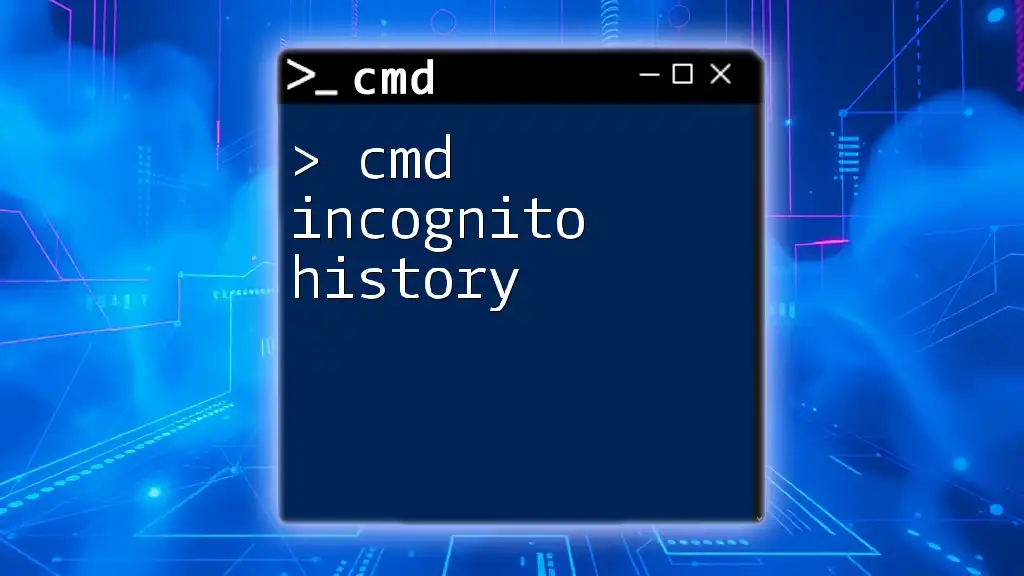
Real-World Applications
Managing File Libraries
In managing large file libraries—such as music, documents, or software—is where the `dir` command shines. By leveraging the `dir` command with various switches, you can categorize, filter, and locate files efficiently, which streamlines organization and retrieval. For example, writing a batch script that generates a complete directory list can save time and reduce manual effort.
Troubleshooting File Issues
The `dir` command is also invaluable for troubleshooting file issues. Whether you're trying to find duplicates, manage large numbers of files, or identify potentially corrupted files, commands like `dir /s` and filtering with wildcards can assist greatly.
Scripting with `dir`
You can enhance productivity by incorporating the `dir` command into batch scripts. This automation allows you to run repeated commands seamlessly. Here’s a simple script example:
@echo off
dir /s /b > filelist.txt
This script will generate a comprehensive list of files within the current directory and subdirectories, saving the output to `filelist.txt`. Such scripts can completely streamline your workflow.
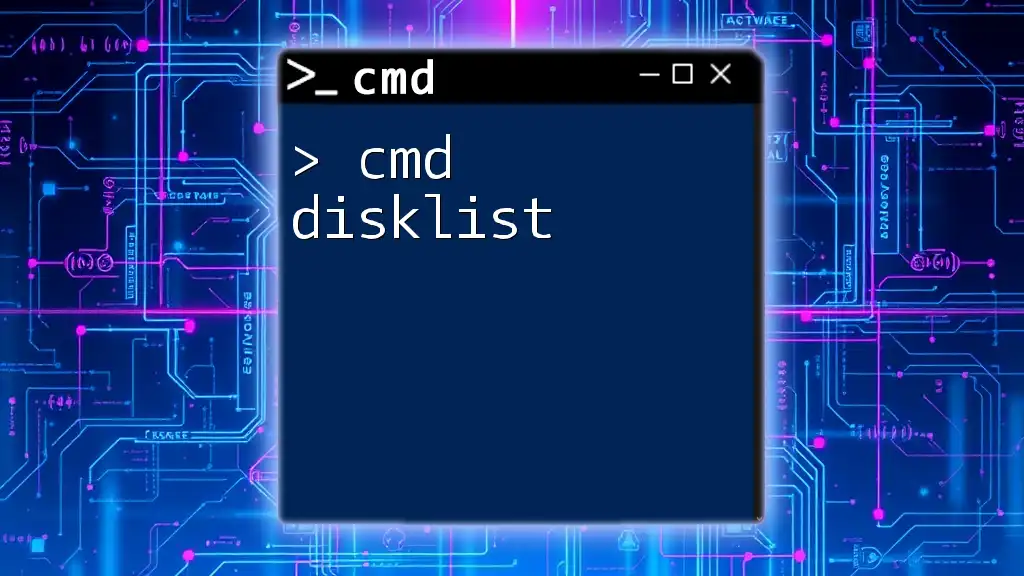
Conclusion
In conclusion, the `cmd dir long file list` command offers robust features and flexibility for managing files and directories in Windows. By combining different switches and understanding their functions, you can effectively navigate, organize, and troubleshoot files in your system.
Explore more about CMD commands to unlock the full potential of efficient file management. Your ability to master these commands will play a crucial role in streamlining your workflow and enhancing productivity in your digital environment.

